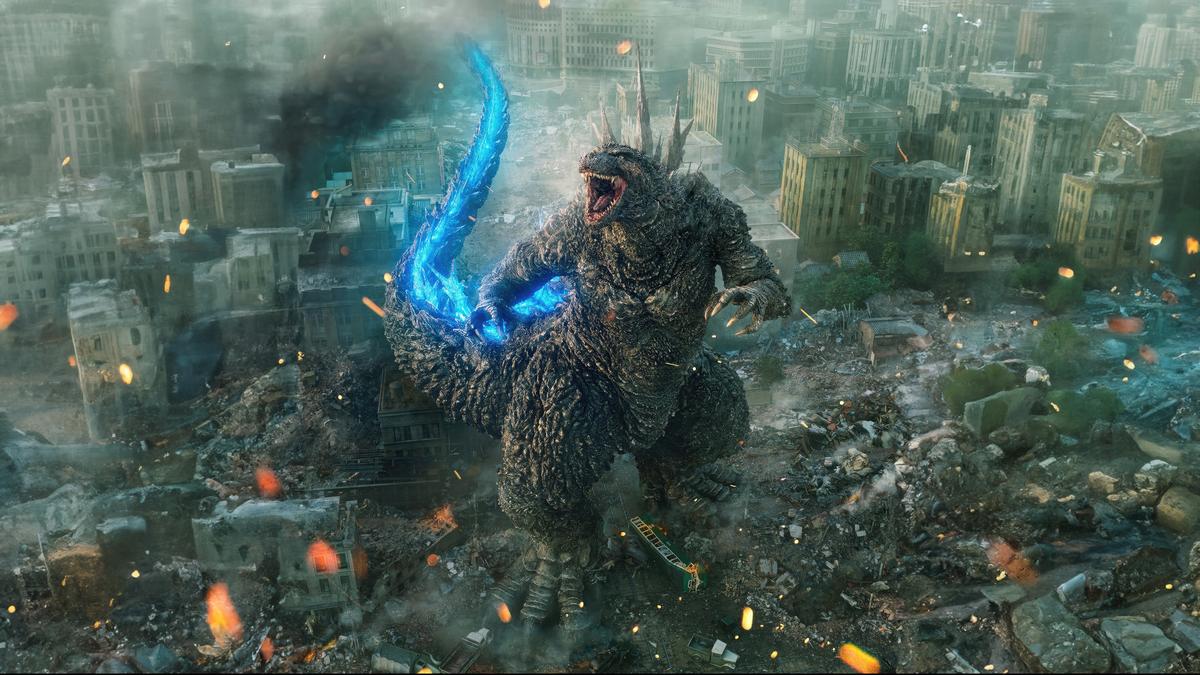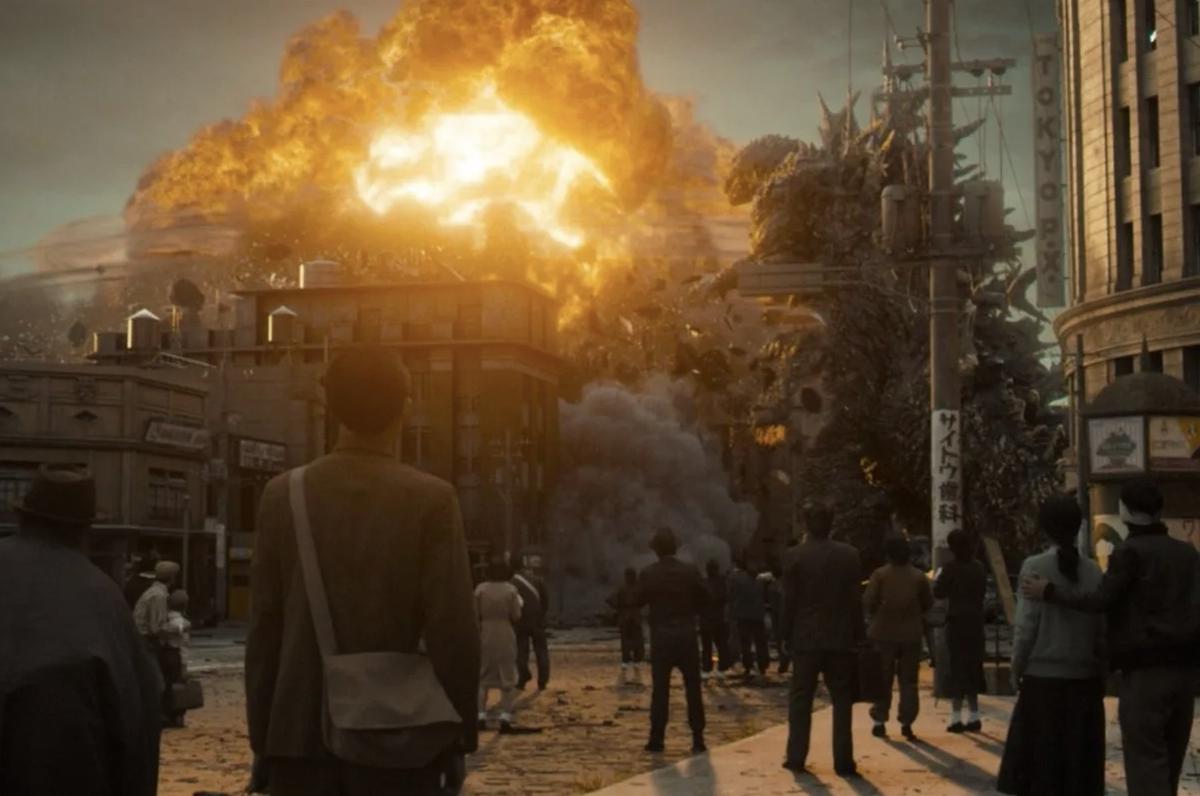- June 2, 2024
‘Godzilla: Minus One’ movie review: Takashi Yamazaki’s glorious modern-day monsterpiece

A still from ‘Godzilla Minus One’
| Photo Credit: TOHO
Takashi Yamazaki’s latest Oscar-winning entry in the storied Godzilla franchise reclaims the beloved kaiju’s roots, melding an awe-inspiring spectacle with a potent exploration of survivor’s guilt. It’s a historical reckoning that would make even the most jaded kaiju cynic sit up and take notice. Behold, its glory. It’s finally here.
Godzilla has been through quite the career since its 1954 debut with Ishiro Honda’s first-of-its-kind monster flick, morphing from a symbol of nuclear horror into a sometimes hero, sometimes villain, and always a box office draw. But in Minus One, Yamazaki strips away dear ‘ol Gojira’s past ‘iguanification’ and subsequent pink-washing, returning our favourite radioactive reptile to ground zero: steeped in the anxieties of post-war Japan and a scathing critique of American imperialism. If we were fooled into believing that an atomic dinosaur couldn’t possibly get any more terrifying, here, for the first time in 70 years, Gojira serves as a colossal, scaly therapist of sorts, forcing Japan to confront its darkest hours and some uncomfortable questions (a true 21st century nightmare).

Godzilla: Minus One (Japanese)
Director: Takashi Yamazaki
Cast: Ryunosuke Kamiki, Minami Hamabe, Munetaka Aoki, Hidetaka Yoshioka, Sakura Ando
Runtime: 125 minutes
Storyline: Japan has barely recovered from the Second World War when a gigantic peril emerges off the coast of Tokyo
The film opens in the immediate aftermath of World War II when Japan is counting its losses and reeling from the aftereffects of the war. The story follows Kōichi Shikishima (played with gut-wrenching vulnerability by Ryunosuke Kamiki), a man plagued by survivor’s guilt, wandering through the rubble of his homeland, and haunted by the spectre of his past deeds…or misdeeds. His journey, which could very well have continued as a solo sob story, instead intersects with Noriko (Minami Hamabe) and an orphaned child. This unlikely trio forms a makeshift family, symbolizing the fragile hope of a nation trying to rebuild from the ground up.
Yamazaki uses this human drama to anchor the film’s larger themes — a historically tried and tested formula for success when crafting compelling kaiju flicks. Kōichi’s struggle is not merely with a monstrous Godzilla but with the remnants of a militant nationalist ideology that glorified sacrifice and heroism at the cost of individual lives. Where the iconic behemoth had previously served as a sharp allegory for the devastating aftermath of nuclear warfare, Minus One mixes it up a little as a metaphor for the destructive force of jingoism and the heavy burden of survivor’s guilt. The film’s brilliance lies in its ability to weave these psychological threads into the fabric of a blockbuster, giving us characters who are as compelling as the monster that threatens them.

A still from ‘Godzilla Minus One’
| Photo Credit:
TOHO
The narrative doesn’t shy away from firing a few rounds of atomic breath at the Truman-are nuclear proliferation either. The reawakening of Godzilla, fueled by the infamous Bikini Atoll nuclear tests, is a not-so-subtle jab at the lingering presence of American military power and its catastrophic consequences. Yet, Yamazaki is too clever to descend into didacticism. Instead, he employs the giant lizard as a means to explore Japan’s fraught relationship with its own history, presenting a revisionist take that is provocative, perceptive and poignant.
But let’s not get too bogged down in the heavy stuff. After all, this is a Godzilla movie, and Yamazaki spectacularly delivers the goods. The kaiju himself is a marvel, rendered with a tremendous amalgamation of CGI and practical effects that pay homage to the creature’s Tokusatsu incarnations.

When Godzilla rises from the depths, its glowing spines cutting through the ocean’s surface, it’s a sight to behold — both terrifying and beautiful. When Godzilla stomps through the city, the ground shakes, buildings crumble, and the camera captures it all with a mix of fluid dynamism and brutal clarity. It’s as if the screen can barely contain the kaiju’s indomitable intensity. This new Godzilla may be dwarfed in size by the likes of Legendary’s take on the King of the Monsters, but what it lacks in size, it more than makes up for as a horrifying force of nature, with nothing but malice in its eyes; its looming presence rendered with a tactile realism makes Godzilla more menacing than ever before.
But it’s not just the big moments that impress. The film’s attention to detail is extraordinary, from the way the kaiju’s skin reflects light and texture, to the intricate design of the decimated cityscape that doesn’t neglect the hundreds of rag-dolling bodies being flung around like puppets. The destruction is seen through the eyes of characters who feel real and relatable. Whether it’s the desperate scramble of civilians or the determined faces of the ragtag team trying to stop the beast, the visuals serve to heighten the emotional stakes.

A still from ‘Godzilla Minus One’
| Photo Credit:
TOHO
With a momentous build-up to the awaited atomic breath, each jagged, protruding scale closes in on the impending doom of a familiar droning hum. The blast’s glorious mushrooming shockwave, with its ripple effect of destruction, is quite simply breathtaking: a perfect encapsulation of the film’s ability to marry awe with horror and an appropriate response to the convenient sanitisation of a certain Oscar-winning Trinity Test sequence of late.
Amidst this second-levelling of Tokyo, we’re constantly reminded of the human cost, of the lives disrupted and the dreams shattered. A reminder that behind every monster movie trope lies a kernel of truth about our own fears and failures. Kōichi and his makeshift squadron of scientists and sailors provide much-needed levity with their banter and camaraderie. These moments hardly undercut the film’s gravitas, rather, enhance it, spotlighting the resilience of the human spirit even in the face of unimaginable horror.

Minus One is a film that manages to bake its radioactive cake and eat it too. It’s a boisterous action adventure that never loses sight of its deeper themes, a rare creature feature with a soul. By blending historical critique with personal redemption, Yamazaki crafts the 33rd iteration in the longest-running cinematic franchise in history that feels epic and intimate. Minus One isn’t just the greatest Godzilla film since the 1954 original — it has undeniably left a crater-sized impact that reaffirms Gojira’s status as the undisputed king of monsters and makes a compelling case for itself as a modern monsterpiece.
Godzilla Minus One is now streaming on Netflix.





